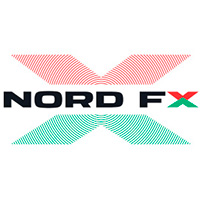If you are trying to trade on daily basis, then you are probably relying a lot on technical indicators. But you should know this: there is not a magic indicator. First of all, haven’t we talk about the importance of keeping an eye on fundamentals and technical simultaneously? Yes. Both types of analysis are equally relevant for your trading.
Second, we shouldn’t be talking about a single magic indicator, but a great combination of them that would provide accurate signals to get in and out of your positions, allowing you to make profits consistently and for an extended period of time.
Third, the best and only way to actually determine which combination of indicators works for you is by putting them into practice and try out their performance with an objective approach. Check which are the indicators offering you better results and move forward with them.
According to a series of tests conducted in the five past years, some analysts have been able to come up with a standard combo of the most popular technical indicators for the EURUSD:
Bollinger Bands
- Configuration: 30,2,2
- Note: When the daily closing price breaks below the lower band, go long. When the daily closing price breaks above the upper band, open a short position.
MACD
- Configuration: 12,26,9
- Note: When MACD1 breaks above MACD2, go long. If MACD1 goes below MACD2, go short.
Stochastic
- Configuration: 14,3,3
- Note: Go long when Stoch% moves above 20 and short when it crosses below 80.
Ichimoku Kinko Hyo
- Configuration: 9,26,52,1
- Note: When the conversion line breaks above baseline, opt for long positions. Go short when conversion line goes below baseline.
 The firm grants access to over 450 trading instruments across six major asset classes, including forex, commodities, metals, indices, shares, and futures, catering to diverse trading preferences.
The firm grants access to over 450 trading instruments across six major asset classes, including forex, commodities, metals, indices, shares, and futures, catering to diverse trading preferences. Trump has declared that the United States could become the global capital of the crypto industry. To achieve this, he proposes reducing regulatory pressures.
Trump has declared that the United States could become the global capital of the crypto industry. To achieve this, he proposes reducing regulatory pressures. Forex trading is a captivating endeavor, promising both active and passive income streams. Yet, mastering forex is a continuous journey that transcends expertise levels, be it a novice or a seasoned trader...
Forex trading is a captivating endeavor, promising both active and passive income streams. Yet, mastering forex is a continuous journey that transcends expertise levels, be it a novice or a seasoned trader... In a resounding victory, NordFX, a prominent brokerage firm, has been crowned the "Best News & Analysis Provider" of 2023...
In a resounding victory, NordFX, a prominent brokerage firm, has been crowned the "Best News & Analysis Provider" of 2023... Errante, the premier online broker, is dedicated to delivering top-tier services and forging long-lasting, trust-based relationships with our clients. Our mission is to enhance your online trading journey...
Errante, the premier online broker, is dedicated to delivering top-tier services and forging long-lasting, trust-based relationships with our clients. Our mission is to enhance your online trading journey...